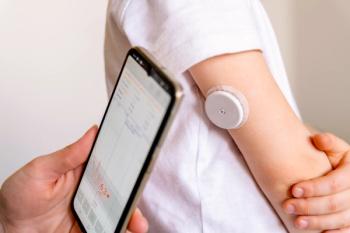
How More Effective Communication Methods Can Increase Confidence in Vaccines
Key Takeaways
- Pharmacists must adopt engaging, bidirectional communication strategies to effectively address vaccine hesitancy and enhance patient confidence in vaccinations.
- Trustworthiness in messaging requires a balance of competence, integrity, and caring, beyond mere medical expertise and facts.
Increasing vaccine confidence demands that pharmacists move beyond simply sharing facts to utilizing effective communication strategies.
Pharmacists play a critical role in combating vaccine hesitancy and increasing patient confidence in vaccines. However, the tides of vaccine hesitancy are changing, necessitating novel strategies to not only disseminate fact-based knowledge and resources but also enhance communication between providers and patients. Only through this process can vaccine confidence be heightened, according to an expert roundtable at IDWeek 2025.1
Featured panelists included Lori Handy, MD, MSCE, associate professor of clinical pediatrics at the University of Pennsylvania's Perelman School of Medicine; Heather Lanthorn, ScD, MPH, director of the Duke Global Health Innovation Center; and Sean O’Leary, MD, MPH, professor of pediatrics at the University of Colorado Anschutz School of Medicine. Moderators of the session were Catherine Mary Healy, MD, FIDSA, associate professor of pediatrics at Baylor College of Medicine; and Kathryn Edwards, MD, professor emerita at Vanderbilt University.1
A key theme throughout each of the presentations was the mantra that “vaccines don’t protect lives—vaccinations do.” Each expert detailed shifts away from traditional communication methods, instead offering more optimal, actionable strategies that pharmacists can easily implement to increase patient confidence.1
“We need—collectively—to help people choose vaccination, and to be satisfied with that choice,” Lanthorn explained.1
Evolving Communication Methods
The traditional methods of health communication are no longer the status quo. Defined by unidirectional flows of information, these methods rely on static websites, informational handouts, and other resources that can increase complexity and make it difficult for the public to process. Pharmacists and health care providers therefore face a crossroads; with traditional methods of information often failing, how can communication be optimized for a modern public?1
"Our challenge is not people asking questions about vaccines,” Lanthorn detailed. “What we need to work on together is helping people navigate the information environment to choose the protection offered by vaccinations.”1
In her presentation, Lanthorn outlined key aspects of improving messaging between health care providers and patients. Chief among these is trustworthiness, with Lanthorn explaining how “we need trustworthy messengers.” However, with so many online resources available to the public—and unknown levels of trustworthiness—patients can feel left out of the conversation, confused, and in need of answers. Patients often then turn to social media, which is accessible and engaging, but can lead to misinformed—and incorrect—rumors.1,2
In this setting, pharmacists and providers face a choice: deflect toward traditional sources and discourage use of social media for health concerns or embrace the growing use of social media and optimize it to their advantage. During her presentation, Handy embraced the latter, explaining that strictly educating patients and leaving them to their own devices once the information is disseminated is not enough.1
“Time and time again, we’ve learned that education is necessary, but it’s not enough,” Handy explained. “Knowledge does not cause or correlate with vaccination, and we need to just accept that. This is where communication comes in.”1
Communication with patients regarding vaccination should be engaging, bidirectional, and integrate knowledge with emotion to allow the public to understand that information is dynamic and can change. Pharmacists, in their roles as public-facing providers, must choose to “gravitate toward informal, engaging messaging” that does not lecture patients, but rather includes them in the conversation and elucidates the “how” and “why” of vaccination.1,3
“You are in a unique position to be the defender of vaccination,” Handy outlined to the audience. “Take that role, really embrace it, and then recognize that what the community needs is to increase confidence.”1
"Make Vaccination Worth It"
As Lanthorn discussed, the foundation of encouraging vaccination lies in building trust. Luckily, research shows that providers are widely trusted. But trustworthiness encompasses more than medical expertise and facts; instead, there is a delicate balance between ability and competence, integrity and character, and benevolence and caring. Lanthorn explains that incorporating each of these characteristics into messaging strategies can help patients increase their trustworthiness of providers, ultimately heightening vaccine uptake.1
Lanthorn cited a study published in American Economic Journal: Economic Policy that sought to analyze the effectiveness of nonexperts in improving vaccine demand. Investigators gave enrollees 2 videos of an individual explaining the benefits of influenza vaccination: in one video, the individual wore a lab coat, whereas in the other, the person wore a white T-shirt. Although respondents noted that the person wearing the lab coat was more trusted, the individual wearing the white T-shirt influenced greater uptake of vaccination, highlighting how a non-expert can still convince individuals on the merits of receiving a vaccine.1,4
What this shows is that trustworthiness requires a constellation of factors, and is not something you can “do,” but rather “build,” according to Lanthorn.1
“This is not about you needing a vaccine quota or making all that vaccine money, right?” Lanthorn posed to the audience. “This is about true caring for the well-being of a child, or an older adult, or anyone in the middle. So, make it worth it.”1
To make it worth it requires a reframing of typical vaccine counseling. This means moving away from referring to the millions of lives saved by vaccination, repeating the “safe and effective” mantra, and relying on mortality as a counseling tool. Instead, pharmacists should frame vaccine benefits in terms of what matters most to an individual patient. Patient concerns should be empathetically listened to and addressed; providers can be realistic with patients regarding the benefits and drawbacks of vaccination, tailored to individual concerns.1,5
Ultimately, pharmacists need to ensure that vaccination is not only worth it, but worth repeating. This will lead to return visits, more vaccinations, and the development of patients as onward advocates for vaccination.1
“Vaccines may not be perfect, but they are worth it,” Lanthorn concluded.1
Leveraging New Strategies to Increase Confidence
The old ways of encouraging vaccination are being replaced with more effective counseling strategies, tailored to each individual patient. But how can pharmacists and providers translate these lessons into practical clinical strategies? In his presentation, O’Leary highlighted the importance of not only giving strong presumptive vaccine recommendations but also incorporating motivational interviewing strategies into patient counseling to drive uptake.1
O’Leary began by assessing the state of vaccine hesitancy. He referenced data indicating sustained declines in vaccine coverage and increases in vaccine exemptions, especially among kindergartners, over the last half-decade. However, O’Leary explained that overall parental vaccine hesitancy has not changed too much since before the COVID-19 pandemic.1,6
Where research lacks is not in determining in which groups vaccine hesitancy is most pertinent, but in effective communication techniques to seriously change patients’ behaviors, according to O’Leary. This is where the concept of motivational interviewing can play a large role and alter traditional counseling methods.1
According to O’Leary, motivational interviewing is a patient-centered communication style that enhances a patient’s own motivation to change their behaviors, rather than a provider’s motivation. “That sounds like manipulation,” O’Leary conceded during his explanation, before pivoting: “Absolutely not. It’s effective communication.”1
One example can be seen in a cluster randomized clinical trial conducted by O’Leary and other investigators. The trial sought to evaluate how a presumptive vaccine recommendation followed by motivational interviewing could be used to increase uptake of the human papillomavirus (HPV) vaccine. Results indicated that motivational interviewing led to a 9.5% increase in HPV vaccine series initiation and a 4.4% increase in HPV vaccine series completion, with the largest impact observed in pediatric practices.1,7
Utilizing motivational interviewing in a pharmacy setting—incorporating the key aspects of open-ended questions, reflection, affirmation, autonomy support, and asking permission—could vastly improve vaccine counseling and increase uptake. O’Leary cautions that the strategy isn’t foolproof. But by prioritizing tailored, empathetic communication, pharmacists can solidify their roles as trustworthy messengers and maximize vaccine uptake.1
REFERENCES
1. Healy CM, Edwards K, Lanthron H, Handy L, O’Leary S. Increasing vaccine confidence. Presented at: Infectious Disease Week 2025; October 20, 2025; Atlanta, GA. Accessed October 20, 2025.
2. Gallagher RJ, Doroshenko L, Shugars S, Lazar D, Welles BF, et al. Sustained online amplification of COVID-19 elites in the United States. Soc Media Soc. 2021;7(2). doi:10.1177/20563051211024957
3. Shen AK, Browne S, Srivastava T, Kornides ML, Tan ASL. Trusted messengers and trusted messages: the role for community-based organizations in promoting COVID-19 and routine immunizations. Vaccine. 2023;41(12):1994-2002. doi:10.1016/j.vaccine.2023.02.045.
4. Alsan M, Eichmeyer S. Experimental evidence on the effectiveness of nonexperts for improving vaccine demand. Am Econ J Econ Policy. 2024;16(1):394-414. doi:10.1257/pol.20210393
5. Gorman S, Lanthorn H, Rabin KH, Ratzan SC. ‘Safe and effective’ is FDA-speak: it’s time to put it to bed. MedPageToday. January 28, 2025. Accessed October 20, 2025. https://www.medpagetoday.com/opinion/second-opinions/113983
6. Halpern L. Vaccine coverage among kindergartners continues decline in 2024-2025 school year. Pharmacy Times. August 4, 2025. Accessed October 20, 2025. https://www.pharmacytimes.com/view/vaccine-coverage-among-kindergarteners-continues-decline-in-2024-to-2025-school-year
7. Dempsey AF, Pyrznawoski J, Lockhart S, et al. Effect of a health care professional communication training intervention on adolescent human papillomavirus vaccination: a cluster randomized clinical trial. JAMA Pediatr. 2018;172(5):e180016. doi:10.1001/jamapediatrics.2018.0016
Newsletter
Stay informed on drug updates, treatment guidelines, and pharmacy practice trends—subscribe to Pharmacy Times for weekly clinical insights.




















































































































































































































